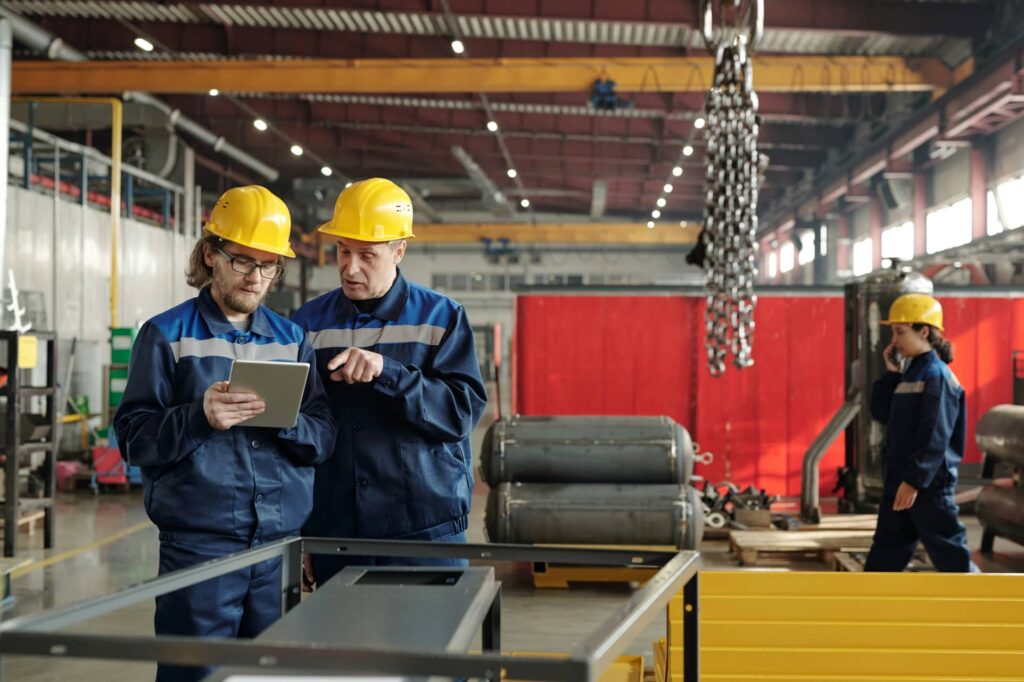7 Reasons to Ditch Paper and Upgrade to a Digital Permit-to-Work System
Without a reliable permit to work system, there’s no guarantee that safety protocols are being followed when handling hazardous tasks. Yet, a lot of companies still use inefficient paper-based systems that miss out on key hazards and controls, making workplace accidents more likely.
Let’s explore the common challenges of traditional PtW systems and show you how switching to a streamlined digital approach can make your workplace safer and more efficient.
How paper-based permit to work systems are holding you back
Paper-based PtW systems throw up a lot of problems. Here are some we see time and time again:
- Chasing papers: Scattered documents make follow-ups inefficient and error-prone.
- No visibility: It’s hard to track who’s doing what, when, and where without a central system.
- Outdated info: Paper systems often have outdated risk assessments that don’t reflect current operations.
- Time drain: Manually checking qualifications for every worker and contractor is time-consuming and is prone to errors.
- Planning headaches: Coordinating tasks and permits on paper makes spotting and resolving conflicts tough.
- Poor time management: Without a clear task overview, managing time effectively is nearly impossible, leading to missed deadlines and inefficient workflows.
- Bad communication: Sharing instructions and SOPs on paper often leads to lost or misunderstood documents.
7 reasons to choose a digital permit to work system

Here’s how the TenForce permit to work module addresses your challenges:
#1. Comprehensive hazard repository
Imagine having a database that knows every potential hazard in your workplace. With TenForce, you get exactly that. You can associate controls and PPE requirements for specific locations, work types, and tools.
So, if you’re working in an area with potential chemical exposure, you’re immediately alerted of the hazards and necessary control.
#2. Streamlined risk assessments
No more sending someone out into the field with a clipboard to guess at potential risks. TenForce uses reference data to identify hazards from the start, guiding you through comprehensive risk assessments. For instance, it ensures every electrical hazard is considered and mitigated when planning maintenance on a high-voltage system.
#3. Enhanced coordination and visibility
TenForce connects job safety analyses, shift logs, qualifications, chemical databases, and recent incidents, giving you a full view of the work environment. You can even integrate plant layouts and P&IDs for real-time updates on isolation plans.
#4. Integrated isolation plans
Need to isolate a system before starting work? TenForce provides a detailed sequence of isolation steps, making sure you don’t miss anything. And, for high-risk tasks like hot work in flammable areas, the system helps set up all required fire prevention measures.
#5. Efficient permit generation
Save time with repetitive tasks by copying permits for similar jobs, ensuring consistency and efficiency. Just duplicate today’s permit for tomorrow’s maintenance task, complete with all the associated isolation plans and controls.
#6. Real-time updates and notifications
Stay informed with real-time updates and notifications. TenForce keeps everyone in the loop via text, email, or the platform, whether it’s a change in job status or an urgent safety alert.
#7. Role-based access and permissions
Manage who sees what with role-based access. Different permissions ensure that everyone from site managers to contractors only sees what’s relevant to their job, reducing information overload.
Levelling up to a complete control of work system
The real bonus of a digital permit-to-work system is how it seamlessly integrates with the entire control of work (CoW) process, making your workplace safer and more efficient.
From safe work practices and operating procedures to risk assessments, permits, isolation plans, and incident reports—you’ll find everything in one place. This means no detail is overlooked.
Practically speaking, it ensures every employee and contractor is qualified for their tasks. It ties risk assessments to work orders, keeping them relevant and up-to-date. Work orders only move forward when all necessary permits are in place, preventing any oversight. The system also considers isolation plans and alerts you to any recent incidents or near misses in the area, giving you a complete hazard overview.
All these components come together in a single platform, turning a complex, fragmented process into a smooth, efficient operation.
See TenForce’s permit to work system in action
Stuck with outdated, paper-based PtW systems? TenForce can help you manage your entire PtW process in a lean, digital way.
Want to see how it works? Check out our on-demand webinar for a step-by-step demo of TenForce in action, a client success story, and a Q&A with top tips. Watch it now!
